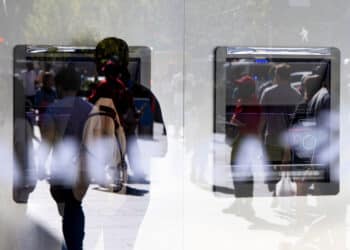In Cadillac Price Drop, the Limits of Incentives Surface

A lower price — as compared to increased incentives — has all sorts of negative ramifications, including to the marque’s brand. So why did General Motors this week choose to drop prices on its Cadillac CTS sedan, GM’s premium vehicle, no less? The answer reveals the bright line of the limitations of incentives to spur sales.
GM dropped the 2015 CTS prices by $1,000 to $3,000. This, just 15 months after Cadillac’s president, Johan de Nysschen, told Automotive News that a price cut to avoid alienating loyal buyers is “not going to happen.”
But de Nysschen was facing a tough sales situation.
U.S. sales of the CTS remained resilient last year in a tough market for midsize luxury sedans. The car’s U.S. sales slipped 4% to 31,115 units last year, compared with a 3% decline for the segment. The decline in CTS sales was not as steep as its key competitors, including the BMW 5 series (down 7% to 52,704 units) and Mercedes E class (off 5% to 66,400).
But those CTS sales required steeper discounts. The average incentive on the car last year was $9,213, research firm Autodata says. The 5-series average incentive was $6,831; the E class was $7,219.
The issue, however, was the $6,000 to $15,000 MSRP increases Cadillac introduced on its 2014 CTSes. Those price increases were a bitter pill for Cadillac loyalists. The thing is, Cadillac thought it was pricing the CTS correctly.
De Nysschen has said that Cadillac must command luxury prices and reduce its reliance on incentives to raise resale values and ultimately rehabilitate the brand’s image. He believes Cadillac’s vehicles compare favorably to BMW, Mercedes and Audi — a view that many auto critics share — and should be priced accordingly.
Even before his arrival, Cadillac’s rationale for the price increase was that the smaller ATS, which entered the lineup in 2012, serves as Cadillac’s entry-level model, giving the CTS higher positioning. The latest CTS was made larger, with better performance and more features, to compete directly with the 5 series, E class, Audi A6 and other midsize luxury models.
Cadillac was in a volume-vs.-revenue quandary. Should it cut prices to keep volume high or stick to its pricing and “accept that you will sell fewer cars,” de Nysschen said. Cadillac opted for volume.
But should Cadillac have increased its incentives instead of dropping prices? Lower prices imply lower quality, especially in the CTS’s corner of the market. Additionally, Cadillac is faced with a situation where the CTS Sedan price was already on its way down. The end average price for the 2015 CTS Sedan might be off even more than the $1,000 to $3,000 price cuts put into effect this week.
It does not look like Cadillac had much choice. With incentives nearly 28% higher than its nearest competitor and accounting for around 17% of MSRP, GM could not double down on subvention. Instead, it was forced to dump MSRP and hope that the goodwill it generates among finicky Cadillac loyalists outweighs the brand hit that will once again put Cadillac on a level below BMW, Mercedes and Audi.
Sometimes, incentives just don’t work.









